The lockdown has blended days, weeks and even months into an irrational mush that leaves us disoriented when asked the question, “what have you been doing?” We have been seeing Salvador Dali’s “The Persistence of Memory” making rounds on social media and the once strange juxtaposition of its objects feels incredibly relatable now. Surrealism indulges in irrationally juxtaposed images and is a cultural movement that developed in Europe in the aftermath of World War I, largely influenced by Dada. Although the movement started in 1920, it is still practiced by contemporary surrealist artists!
Penny Slinger
Slinger works around themes of female subjugation, desire and rebirth. “As Surrealism does not conform to rational paradigms, it is uniquely suited to express the intuitive, feminine realms,” she has said. With the juxtaposition of parts of the female body on one another, she explores the male gaze and female agency through her works. Her publication of 50% The Visible Woman, a book of photographic collages, was one of the first times that the male tools of surrealism were subverted. She did this by photographing her own body and portraying it as an object of the female psyche.
Interestingly, her ideas were considered too radical at first, garnering a lukewarm response to her artworks. Feeling dejected, she chose to go in exile for around 15 years after which she resurfaced and has been met with a new-found appreciation for the fascinating emotions evoked through her work.
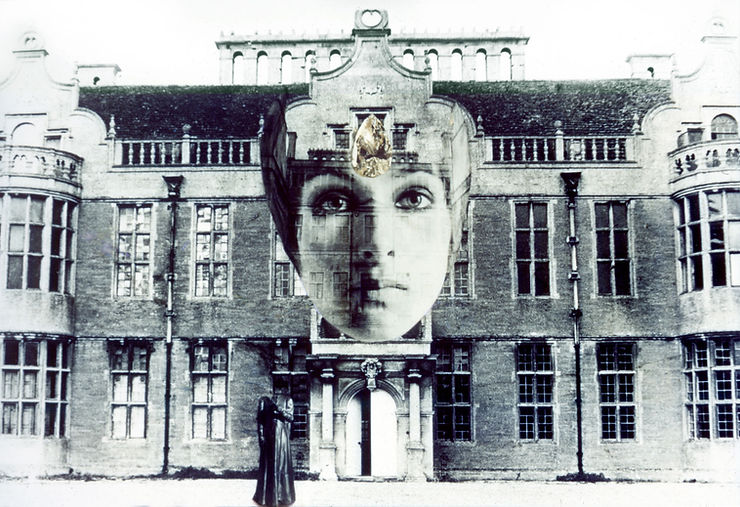
Genesis Belanger
The artist creates surrealist sculptures that combine everyday objects and food with human-like features. Belanger gives life to a part by making a body of their own – it becomes an extension of itself – thus, the objects become a substitute for the body. Working in the advertisement industry before becoming an artist, she is inspired by the way advertisements severe the parts of women’s bodies. She likes to work with figures of hands and limbs and anthropomorphise them.
Her work is an exploration of power structures in a society with a male-dominated perspective. Belanger also communicates the absurdity of the capitalistic landscape through these surrealist sculptures. She sculpts in porcelain, clay and concrete tinted in fondant hues. These objects capture attention by their ability to oscillate between feelings of unease, solace and disembodiment.
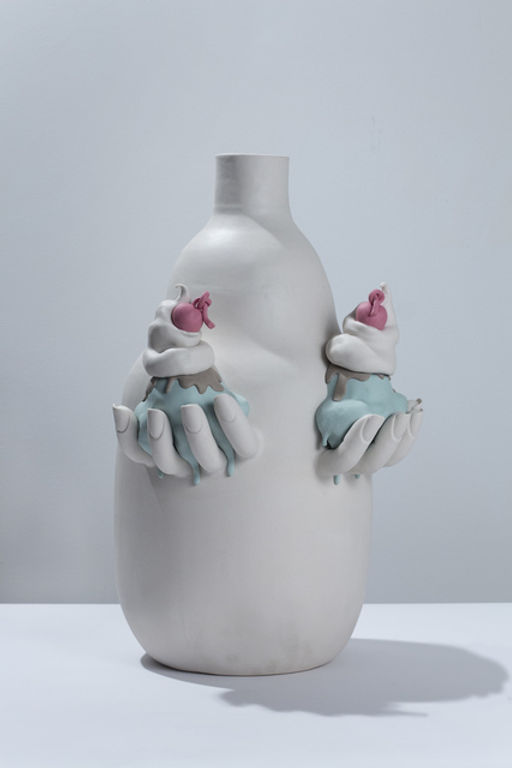
Joydip Sengupta
In many ways, Sengupta’s work is about the surplus of culture, juxtaposing several images and fragments of objects on one another. The worlds he creates through his works are timeless and floating – losing the sense of immediacy one feels in “reality”. Seeking to understand tradition and modernity, he incorporates visuals from both to create a dialogue within the artworks. His ideas highlight the consumerism of the current age.
He has said in an artist statement, “My aesthetics is rooted in the collusion of many worlds.” This depends on the interplay of drawing, painted surface and abstract shapes that combine to create a sense of ambiguity.
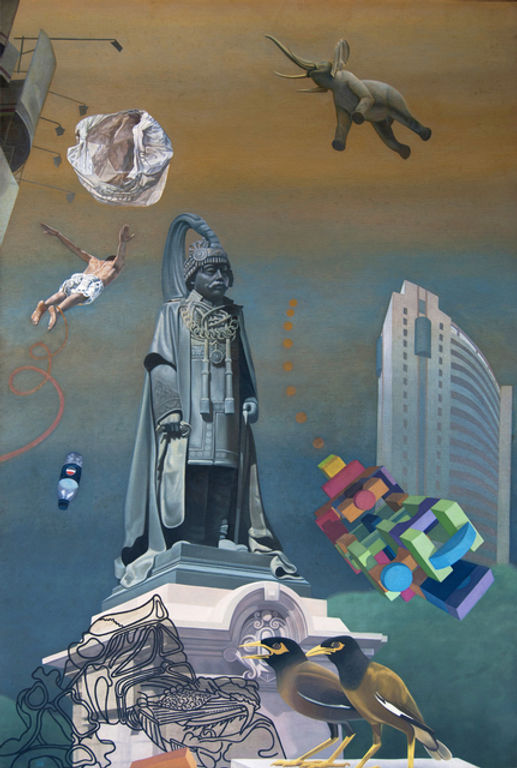
John Stezaker
Best known from the collages he makes from found objects like postcards, photographs and film stills, Stezaker’s work includes the most minimal mutilation of the media to create new surrealist narratives. He has famously said, “What I do is destructive, but also an act of deliberate passivity.” By putting two images side by side with uncanny cuts, he demands attention to the abrupt shift in perspectives. These disconcerting hybrids make for works of eerie beauty.
Through his artworks, he has often juxtaposed glamour with caves and waterfalls. These unrelated images joined together make for unique narratives, communicating fallacies and cultures taken for granted.
Stezaker made these collages in private for 40 years, deliberately not letting anyone in the art world know about his work. He was only “discovered” by a curator a few years ago. He prefers working with found objects that have lost their immediate relationship with the world, and thus, chooses dated objects for his collages.
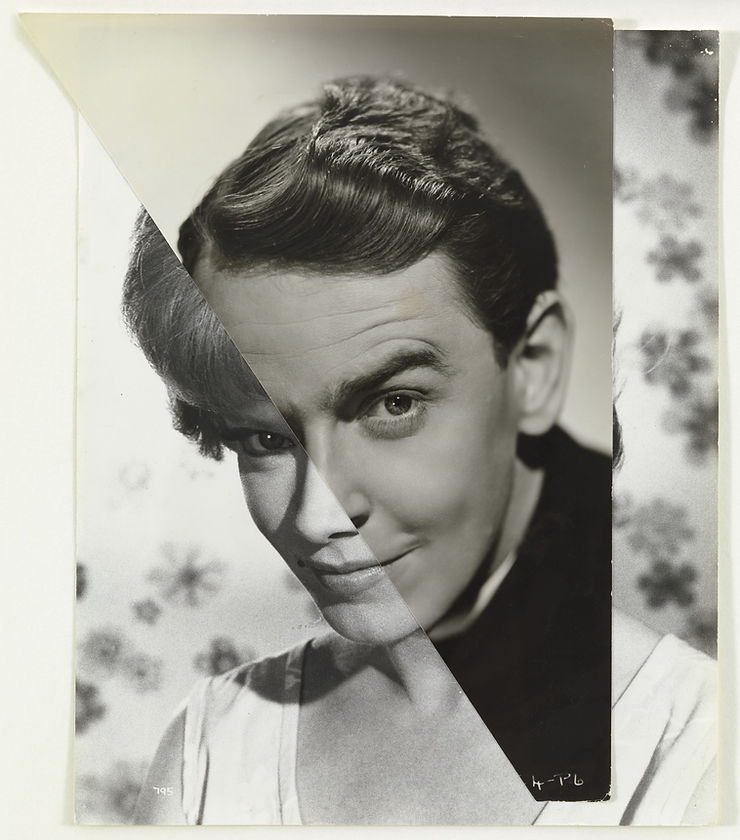
Sascha Braunig
Her work, mainly focused on portraits, evokes digital associations while her work is analogue. This dissonance lends to the surrealism the works portray. Although she uses traditional mediums, the content and colours make her productions seem digital, futuristic, data-driven creations. The patterns force the viewer to reconsider the figures and see them in a new light.
She depicts female bodies and highlights its objectification along with the detachment women feel with their bodies in this digital age.
Braunig paints from observation of small models, which she makes from clay and illuminates with dramatically coloured lighting. Her figures have an iridescent glow on their “skin” that create a hypnotic, surrealistic experience.
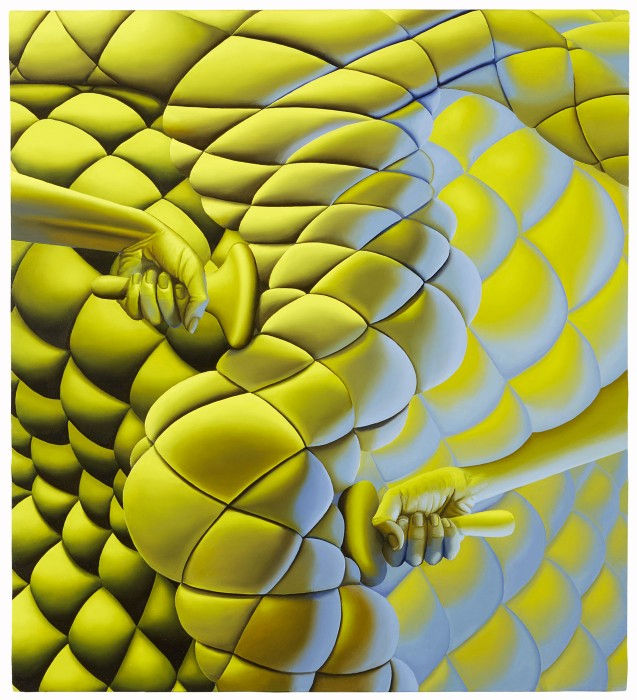
Prabhakar Pachpute
In his site-specific works, Pachpute often delves into the issues of mining through portraiture and landscape – sometimes through the content and other times metaphorically, through the usage of charcoal in his work. Belonging to Chandrapur, The City of Black Gold, he is from a family that has worked for three generations in the oldest mine in the county. The artist derives inspiration from the state of Maharashtra, India while creating relatable experiences for a global audience.
In his work, “The Wide Divergence of the Cotton Gin”, he draws the machine, large and intimidating, compared to its workers, who have axes and satellite dishes for heads. Through surrealist tropes, he explores the transformation in the world – economic and societal. His projects often subtly reflect his personal experiences.
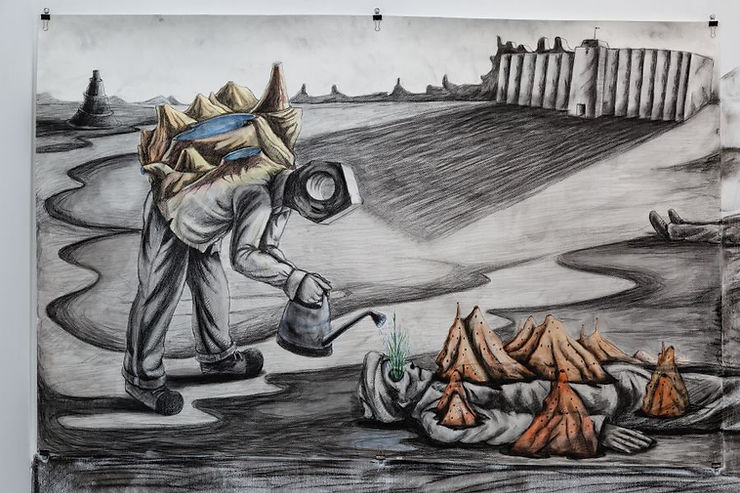
Julie Curtiss
Contrasting a feeling a familiarity with surrealism, Julie Curtiss works around the opposite concepts of Culture and Nature to incorporate them in various aspects of female identity. Her work is an invitation to witness a puzzle, associating darkness with humour. She has confessed that she enjoys being a woman painting women. However, she also paints about men painting women through the years and challenging their portrayal of womanhood with her own.
After having stayed in Tokyo for a year, she has portrayed a lot of Japanese culture through her works. She believes that people like drawing connections while looking at a piece of work and thus creates a frame of references in her work. She depicts figures without revealing their form, creating an uncanny experience for the viewer. With their faces absent, she substitutes vibrant, bold colours and sometimes even creates a repetition of fragments recurring in her paintings.
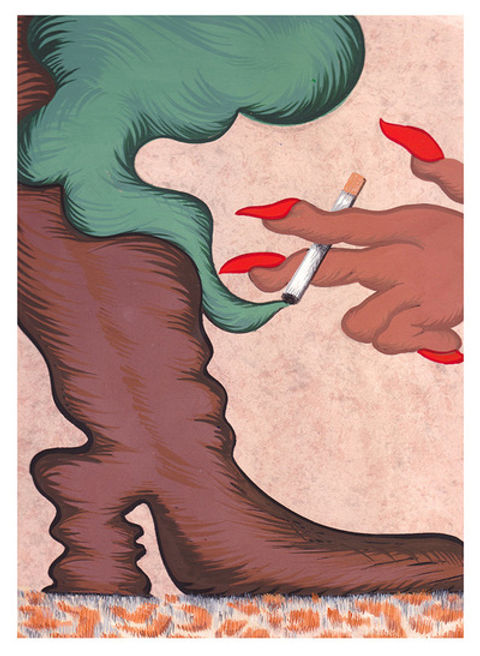
With the boom of technology in our lives, surrealism gets in touch with our unconscious and asks us to introspect, increasing our attention spans for some moments, questioning the images in our dreams and the incredulous amount of visuals we consume on a daily basis through our smartphones. With our relationship with visual cultures (especially during the lockdown) getting more and more complex, these artists communicate our confusion through various mediums.
Want to know how art has evolved during crises over time? Check out this blog!



